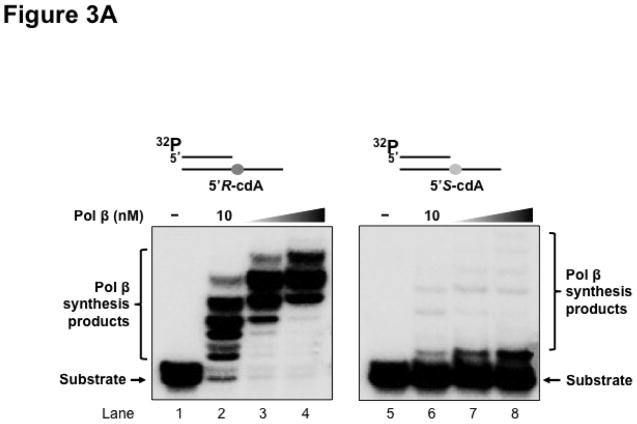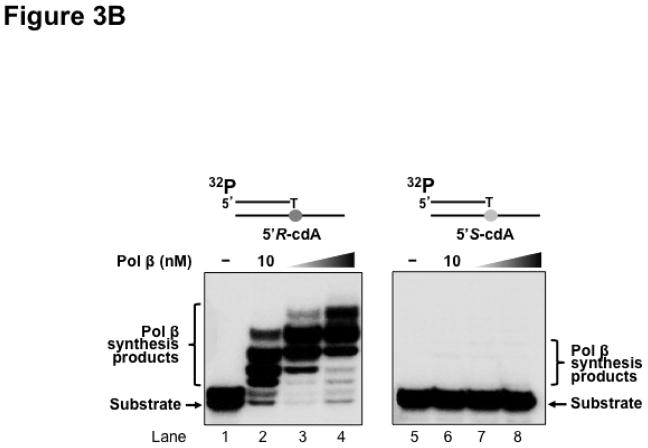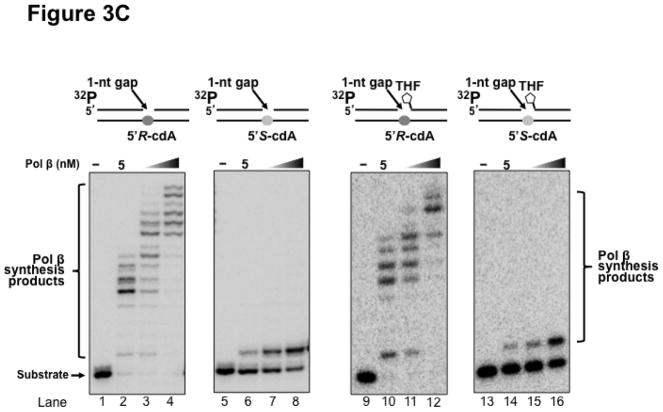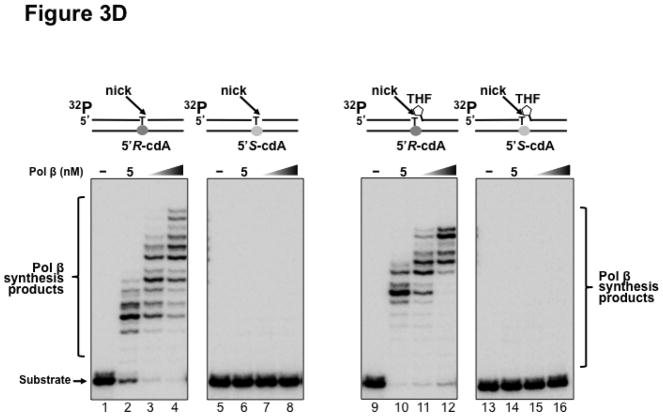Figure 3. Pol β DNA synthesis with a template cdA lesion during DNA replication and BER.
(A) Pol β bypass of a cdA at an open template during DNA replication was examined with the substrates containing a 5′R-cdA or 5′S-cdA with an upstream primer alone annealed with the template strand as described in Materials and Methods. (B) Pol β DNA synthesis in extending a 3′-terminus dT that base paired with the template cdA lesion during DNA replication was measured with the open template substrates under the experimental conditions as described in Materials and Methods. For panels (A) and (B), lanes 1 and 5 represent substrates only. Lanes 2–4 and lanes 6–8 correspond to reaction mixtures with 10 nM, 25 nM and 50 nM pol β, respectively. (C) Pol β bypass of a cdA during Okazaki fragment maturation and BER was examined with the substrates containing a 1-nt gap opposite a template 5′R-cdA or 5′S-cdA and the downstream primer with a 5′-phosphate or a 5′-phosphorylated THF residue as described in Materials and Methods. (D) Pol β DNA synthesis after a template cdA was bypassed during Okazaki fragment maturation and BER was examined with nick substrates in which the cdA was base paired with a dT. Pol β DNA synthesis to extend a dT that was base paired with a template cdA during BER was measured by using nick substrates that contained a downstream primer with a 5′-phosphorylated THF residue. For both panels (C) and (D), lanes 1, 5, 9 and 13 correspond to substrates only. Lanes 2–4, 6–8, 10–12 and 14–16 correspond to reaction mixtures with 5, 10 and 25 nM pol β, respectively. Substrates were 32P-labeled at the 5′-end of the upstream primer as indicated. Substrates are illustrated schematically above the gel.




